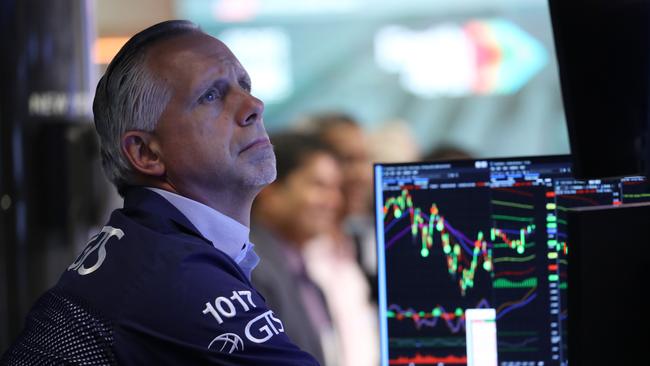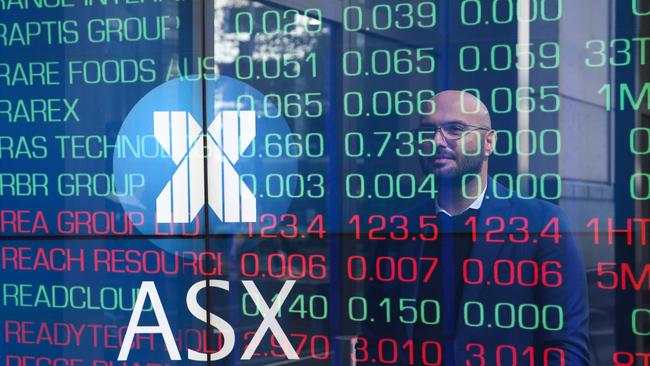When hunting for bargains don’t be fooled by low price-to-earnings ratios
Banks and miners possibly look cheap but they may become cheaper – with some honourable exceptions.

A brutal September has pushed the market indicator that used to be known as Citi’s Panic/Euphoria Index, into panic territory.
The good news is that history suggests when this happens, shares are at an attractive entry points for investors who have the stomach to look beyond the short term.
A recent historical analysis by JP Morgan of price-to-earning ratios offers plenty of insights that could prove useful.
On the investment bank’s analysis, US equities commenced the new era on a general PE of 14.7-times and by the time the Covid-19 pandemic hit in 2020 that number had risen to 27-times, for a remarkable expansion in market multiple of 12.3 points.
It’s probably fair to assume such expansion had never been witnessed before.
But similar to the previous pre-2000 period of multiple expansion, this one came to an end with Covid-19, even though multiples rose substantially in 2020 as investors anticipated the post-pandemic recovery.
As corporate profits bounced, broad-market PE multiples declined at first, but subsequently increased again and stayed high until bond market yields rose substantially early in 2022.

That moment, we know now, ushered in today’s new era of much lower PE multiples.
And just like what happened between 2004 and 2008, energy and mining companies have taken the lead in sharemarkets to date, often combining super-low PEs with super-sized profits, cashflows and dividends.
So what about Australia and the ASX?
The PE multiple for the ASX 200 hasn’t moved much since 2012, with the PE at both ends around the long-term average of 14.5 times, pre-September selling.
The index has appreciated by circa 50 per cent over this period, which is equal to the growth in the local market’s average earnings per share over those years.
Inside those numbers are some revealing themes.
JP Morgan has put the old adage to buy when multiples are high and sell them when they’re low to a historical test, and the mantra has mostly proved correct.
By December 2015, the average PE for the local mining sector had risen beyond 20-times, marking a decade high. As long-term price charts indicate, this also marked the low point for most share prices.
Shares in BHP, for example, temporarily sank below $14. The ASX chart for Fortescue Metals shows a price below $2, while Santos witnessed a price of $3.
The energy sector, while dominating returns throughout 2022, experienced another fall-off-the-cliff experience when Covid hit in 2020. The latter, by the way, also included the coal sector.
JP Morgan observes how the preceding year, 2019, was one of few when both earnings and multiples for mining rose as forecasts for bulk commodities improved.
Fast forward to 2022: the local mining sector is trading at a decade low PE of 9.3-times. History shows the same basic principle when investing in oil and gas producers, conclude the analysts, albeit with the added observation that multiples and profits for the likes of Woodside, Santos etc never move in the same direction: It is the most volatile of all sectors.
On current forecasts of 20 per cent EPS growth for the sector in FY23, JP Morgan estimates the sector PE will shrink to circa 5-times, assuming no further price appreciation. Separately, the broker has a subdued message for investors in the local banks – while profits are expected to rise over the next 12 months, analysts believe the sector PE multiple is poised to de-rate in the face of economic challenges ahead, which implies limited upside potential only.
Australian banks have had a difficult decade, point out the analysts, only achieving negligible net EPS growth over the past 10 years.
Over that period, return on equity for the sector has halved, capital ratios increased and margins declined as competition intensified (see also: Macquarie Group in mortgages) and the royal commission lifted overall costs.

No coincidence then perhaps, that most share prices in the sector today are at a similar price level as back in 2012, or lower – with exception of National Australia Bank and the one superior performer locally, Commonwealth Bank.
All other share prices are significantly lower still, and, in some cases only briefly managed to revisit pre-GFC levels helped by falling bond yields in 2015.
The final sector observation in the report highlights the danger of working with broad averages; there is always room for opposing details beyond the average and investors would be wise, in broad terms, not to neglect individual company specifics.
The local healthcare sector, reports JP Morgan, has enjoyed a long period of expansion in both earnings and multiples through to 2020. But now the broker’s forecast is for a largely unchanged sector EPS in FY23.
Hence any upside will have to stem from multiple expansion, which is still possible, as reliable and defensive healthcare earnings and dividends become more attractive in the face of rising uncertainties about next year’s outlook for the global economy.
However, what this generalisation omits is the ASX healthcare sector combines both Covid victims and beneficiaries, meaning the finer details behind that average offer a lot more nuance (and potential upside).
Plasma and vaccines company CSL, for example, is forecast to grow EPS by double-digit percentages in both FY23 and FY24. If correct, this will pull back its PE multiple to 27-times by mid-2024.
As such, investors are yet again being reminded that PE ratios can be a very useful tool, but only when combined with the right context and background.
Rudi Filapek-Vandyck is editor of the stock research service fnarena.com



To join the conversation, please log in. Don't have an account? Register
Join the conversation, you are commenting as Logout